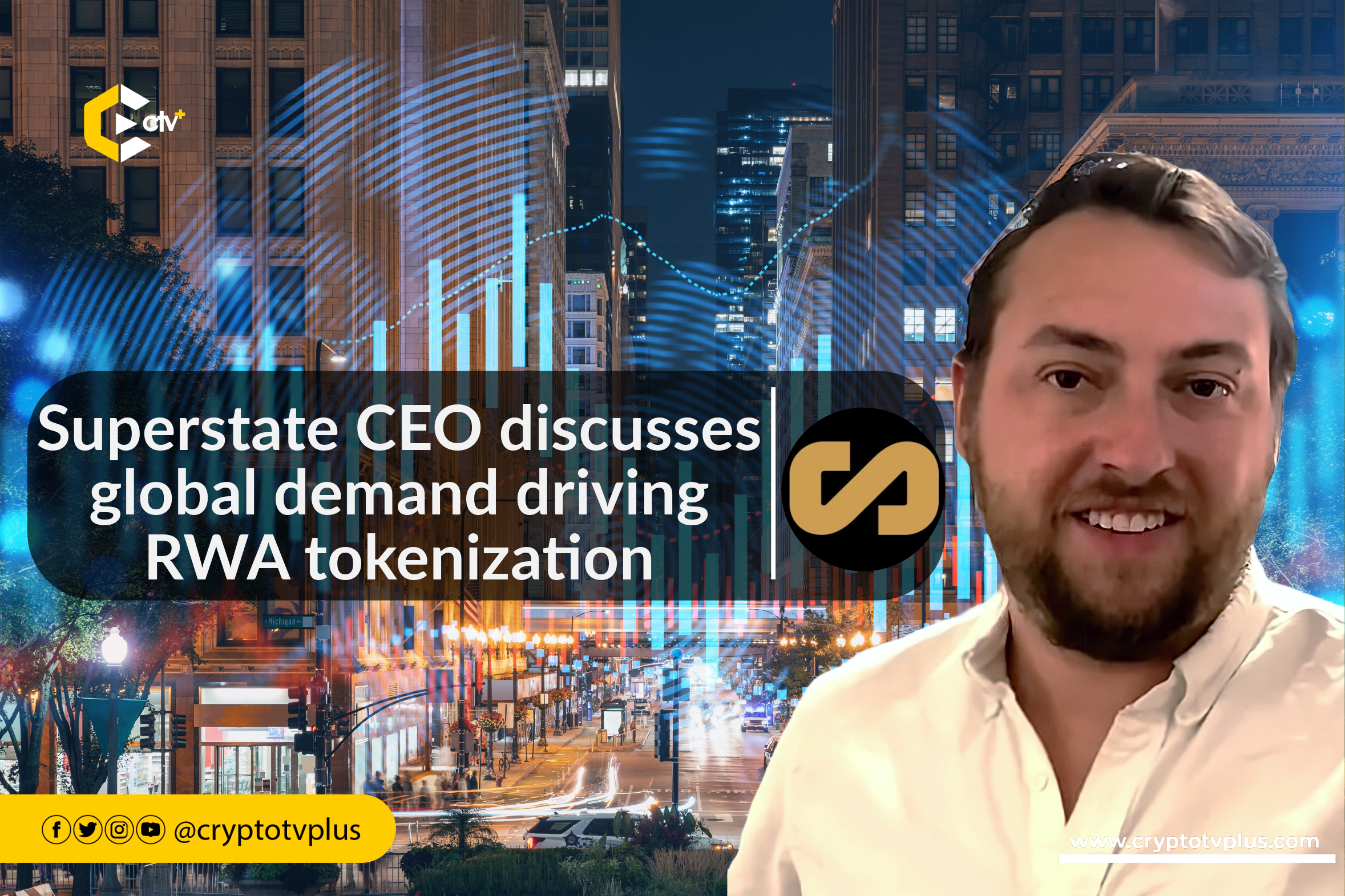FEATURED
Superstate CEO discusses global demand driving RWA tokenization

In a recent presentation at Mainnet 2023, Robert Leshner, the CEO of Superstate and founder of Compound, discussed the potential of tokenizing real-world assets within the decentralized finance (DeFi) space. He emphasized the importance of embracing “boring” assets, such as U.S. government bonds.
Superstate is a blockchain-based government bond fund that leverages the Ethereum blockchain as a secondary record-keeping tool. The project aims to tokenize financial products, providing regulated, on-chain funds that U.S. investors can access.
Tokenizing real-world assets within the decentralized finance (DeFi) space has become a topic of great interest. During a recent presentation at Mainnet 2023, Robert Leshner, CEO of Superstate and founder of Compound, explored this potential.
Leshner highlighted the significance of embracing seemingly “boring” assets, such as U.S. government bonds, and discussed the role of Superstate in this emerging landscape.
The blockchain-based government bond fund utilizes the Ethereum blockchain as a secondary record-keeping tool to tokenize financial products and offer regulated, on-chain funds accessible to U.S. investors.
It has raised significant funding to develop compliant, tokenized, and publicly registered investment funds, with a focus on modernizing investing through tokenized financial products. The firm is led by Robert Leshner, renowned for his work in the crypto space, notably the launch of the DeFi protocol, Compound.
Superstate’s approach to tokenization bridges the gap between high-quality, compliant financial products and the innovation that decentralized finance (DeFi) offers to traditional finance. The project has received funding from prominent investors and is focused on bringing the advantages of on-chain funds to U.S.-based investors.
Real-world assets (RWA) are tangible or physical assets that exist in the physical world and possess inherent value. They can be classified into two main categories: tangible assets, such as real estate, commodities, and physical works of art, and intangible assets, which include contractual or legal rights, such as patents, copyrights, brand names, and trademarks.
The tokenization of real-world assets involves creating digital representations of these tangible assets on a blockchain or similar technology, allowing for their trade and transfer in the digital environment.
This process enables the fractional ownership of assets, providing new investment opportunities and increasing liquidity. Tokenized real-world assets can include a wide range of assets, such as real estate, art, commodities, and government bonds.
The Evolution of DeFi
The CEO discussed the history of decentralized finance (DeFi), tracing its development from basic protocols like MakerDAO to more intricate systems such as Yearn, Olympus, and similar platforms. Despite the progress made, the overall assets in the DeFi space have shown limited growth in recent years, indicating a need for a fresh strategy.
He also talked about the distinctive strengths of assets issued on blockchain, labeling them “DeFi superpowers.” These superpowers encompass features like programmability, autonomy, transparency, efficiency, and fairness, emphasizing the unique advantages that blockchain-based assets bring to the world of decentralized finance.
The Challenge Ahead
The CEO highlighted a notable challenge: the limited presence of assets on-chain. He initially anticipated that, by 2023, a diverse range of assets, such as stocks, bonds, currencies, and real estate, would be incorporated into the blockchain. However, this vision has not materialized, presenting a significant opportunity for the DeFi community.
He also outlined several challenges associated with tokenizing real-world assets, including compliance with KYC/AML regulations, intricate legal structures, complex financial considerations, and, notably, the demand for such assets in the market.
He revealed the complexity of tokenizing assets, highlighting the intricate global securities laws applicable to nearly any asset. He explained that assets with financial complexities, such as those with dividends or payment streams, pose significant challenges in translating their characteristics onto the blockchain.
It is difficult to ensure cash flow, governance rights, and unique features of an asset are seamlessly integrated for token holders. Despite these complexities, he added that the most crucial factor influencing tokenization is demand, particularly for holding traditional currencies on the blockchain, like the dollar.
“I will say that demand is the most important thing in terms of tokenization because demand pulls an asset on-chain, not the other way around,” he said. He added that based on a chart he showed the audience, “the first asset to get mainstream tokenization was dollars, and that’s because the complexity of dollars is incredibly low and the demand is incredibly high.”
Robert addressed the necessity for DeFi protocols to adapt and comprehend assets with permissions. He noted the importance of establishing a framework where both permissionless and permissioned assets can coexist harmoniously within the DeFi ecosystem.
Tokenization Framework
Leshner introduced a tokenization framework centered on simplicity and asset demand. He asserted that “boring” assets, such as dollars and treasuries, are likely to be tokenized initially because of their straightforward nature and high demand.
He suggested that foreign currency, despite being somewhat more interesting, remains largely untapped in terms of tokenization. Robert anticipates a significant adoption of non-dollar stablecoins in the future, particularly on the international stage, acknowledging their potential despite being considered a bit less boring and more complex than traditional dollar-based assets.
According to Leshner’s prediction, the tokenization of more intricate assets like equities and real estate will occur gradually. This process is expected to unfold as demand increases and the DeFi ecosystem establishes the essential infrastructure to support the tokenization of these more complex assets.
Read also; StreamingFast CTO introduces Substreams: a game-changing indexing technology for blockchain












